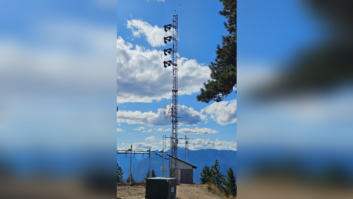AM owners will soon get relief on one regulatory item. The FCC has released a Report and Order aimed at clarifying the rules concerning construction near AM towers, among other AM protections.
The topic stems from 2008, when the agency issued a Notice of Proposed Rulemaking on both tower construction and on moment method computer modeling to demonstrate that certain AM directional antennas perform as authorized. At the time, the commission said the tower construction rule changes would simplify procedures and reduce costs.
Now, the commission has established a single protection scheme for tower construction and modification near AM tower arrays. The agency has also designated “moment method” computer modeling as the primary method to determine whether a nearby tower affects an AM radiation pattern. The industry told the agency moment method is more efficient, less time-consuming and costly than traditional directional AM field strength proofs.
NAB supports the changes. Asked for comment, an NAB spokeswoman told Radio World, “Our concern is that AM stations’ signal patterns be protected from the potential effects of nearby tower construction. The proliferation of cell towers in particular, many times in close proximity to AM radio towers, can make it difficult for AM stations to remain compliant with FCC rules. Owners of towers that can affect AM stations in this manner should take appropriate measures to insure negligible impact on AM station signals.”
In general, AM towers are protected from nearby tower construction that may distort their AM antenna pattern. However, the commission said in the notice from 2008 that Sections 73.1692, 22.371, and 27.6318 of the existing rules impose different requirements onbroadcasters and wireless companies, although the pattern distortion issue is the same regardless of the types of antennas mounted on a tower. Other portions of the rules, such as Part 90 and Part 24, lack provisions entirely for protecting AM stations from possible effects of nearby tower construction.
A coalition of broadcasters, consulting engineers and equipment manufacturers originally proposed streamlining the AM tower rules and “harmonizing the disparate treatment” between broadcast and wireless entities. The coalition proposed, and the commission agreed, to make it so that anyone proposing to build or significantly modify a tower or support structure near an AM tower — or proposing to install an antenna on an AM tower — is responsible for taking steps to correct disturbances to the AM radiation pattern.
The commission’s longstanding “newcomer” policy mandates that someone building a new or modified facility is responsible for eliminating objectionable interference to existing stations. Despite this underlying remediation policy, the lack of explicit rules across all services has led to inconsistent protection to AM towers affected by nearby construction, so says the agency as well as the coalition which hopes uniform rules for all services will stem confusion and ensure consistent protection to AMs.
Existing commission rules require licensees and permittees to notify AM stations and take appropriate action when a tower is built within a fixed distance of an AM station. The new rules define the critical distance for directional AM stations as any distance less than 10 wavelengths of the frequency of the AM station up to a maximum distance of three kilometers (1.86 miles), as specified in existing rules for certain wireless licensees.
Short towers are not affected by the changes and many routine cases in which antennas are added to existing towers are excluded.
The commission adopted a threshold height for antennas, excluding most of those on top of buildings, except where the structure alone would be a significant re-radiator. It also adopted a 30-day period in which those who build or modify a tower can notify an AM station. The idea is to reduce the potential for disputes while providing adequate notice to AM licensees.
In general, the commission will apply the notification requirements only to applicants, licensees, and permittees prospectively for towers built after the effective date of the new rules. But there may be AMs adversely affected by earlier tower construction. In those cases, the affected AM can seek relief by filing a showing of adverse impact within two years of the effective date of the new rules, and the commission may direct the tower owner to install and maintain any detuning apparatus necessary to restore proper operation of the station.
The wireless industry largely supports the changes, according to the commission.












